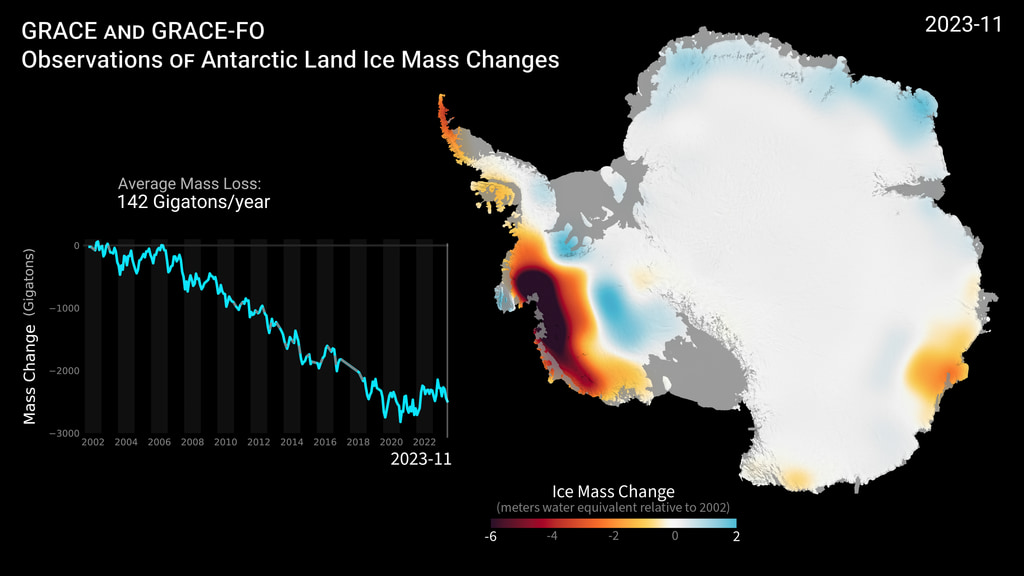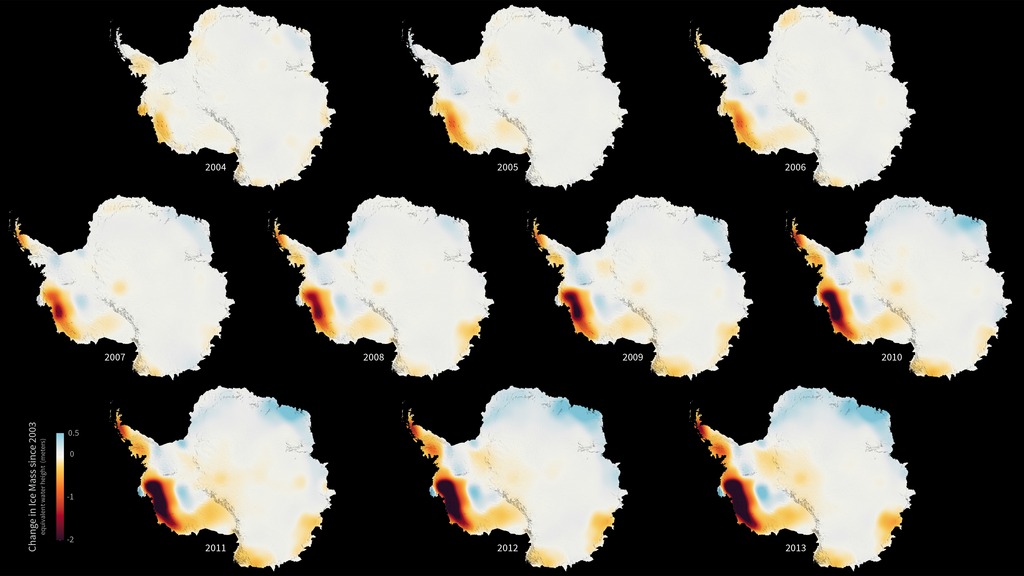A newer version of this visualization is available.
Antarctic Ice Loss 2002-2016
The mass of the Antarctic ice sheet has changed over the last several years. Research based on observations from NASA’s twin NASA/German Aerospace Center’s twin Gravity Recovery and Climate Experiment (GRACE) satellites indicates that between 2002 and 2016, Antarctica shed approximately 125 gigatons of ice per year, causing global sea level to rise by 0.35 millimeters per year.
These images, created with GRACE data, show changes in Antarctic ice mass since 2002. Orange and red shades indicate areas that lost ice mass, while light blue shades indicate areas that gained ice mass. White indicates areas where there has been very little or no change in ice mass since 2002. In general, areas near the center of Antarctica experienced small amounts of positive or negative change, while the West Antarctic Ice Sheet experienced a significant ice mass loss (dark red) over the fourteen-year period. Floating ice shelves whose mass GRACE doesn't measure are colored gray.
Ice sheet mass loss with superimposed ice sheet velocity streamlines.
Ice sheet mass loss on a black background.
Ice sheet mass loss with velocity streamlines on a white background.
Ice sheet mass loss on a white background.
For More Information
Credits
Please give credit for this item to:
NASA's Goddard Space Flight Center
-
Scientist
- Felix W. Landerer (NASA/JPL CalTech)
-
Visualizer
Release date
This page was originally published on Thursday, May 11, 2017.
This page was last updated on Sunday, February 2, 2025 at 12:37 AM EST.
Missions
This page is related to the following missions:Datasets used
-
[Gravity Recovery and Climate Experiment (GRACE)]
ID: 221
Note: While we identify the data sets used on this page, we do not store any further details, nor the data sets themselves on our site.


